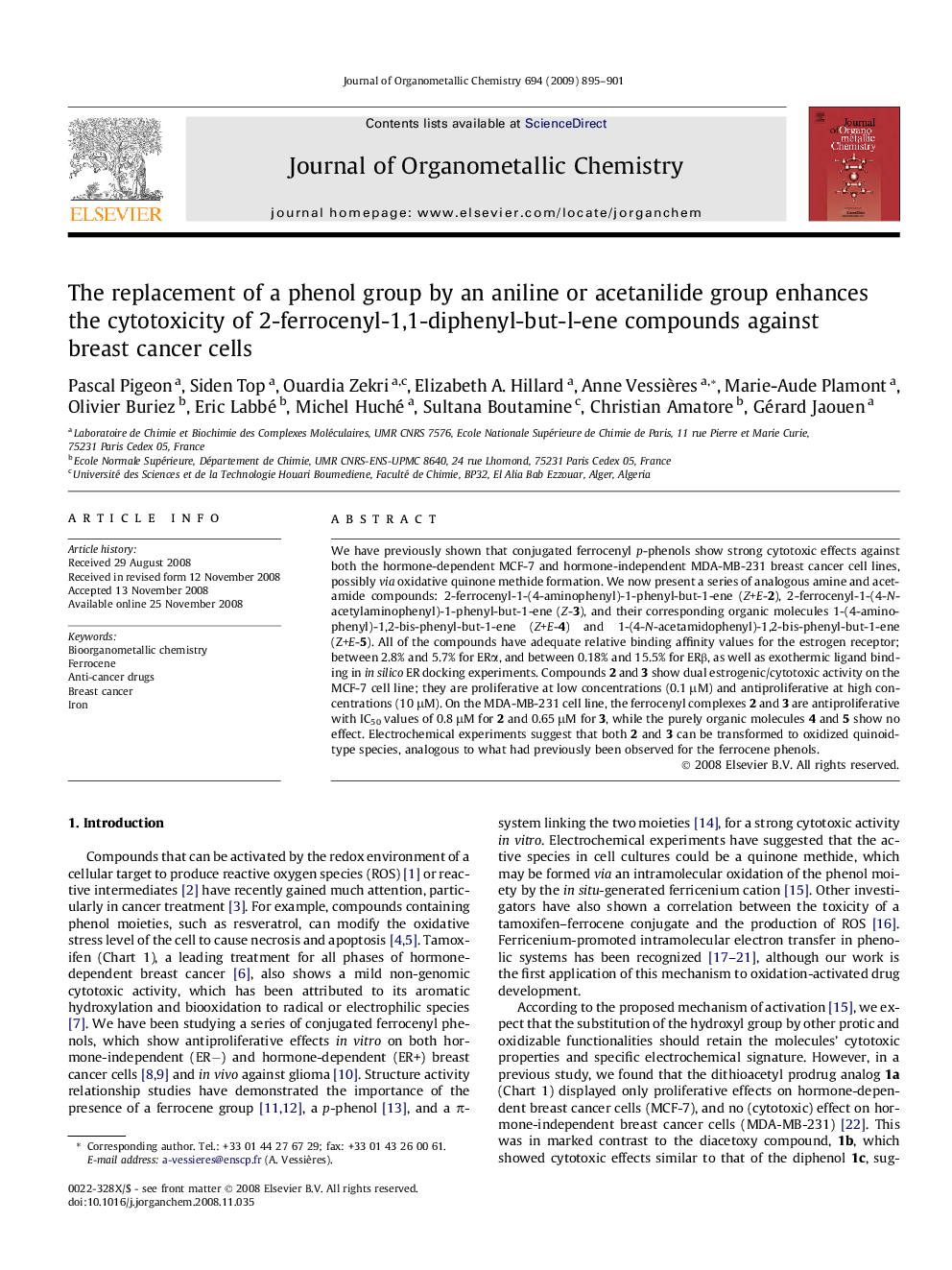| Article ID | Journal | Published Year | Pages | File Type |
|---|---|---|---|---|
| 1322863 | Journal of Organometallic Chemistry | 2009 | 7 Pages |
We have previously shown that conjugated ferrocenyl p-phenols show strong cytotoxic effects against both the hormone-dependent MCF-7 and hormone-independent MDA-MB-231 breast cancer cell lines, possibly via oxidative quinone methide formation. We now present a series of analogous amine and acetamide compounds: 2-ferrocenyl-1-(4-aminophenyl)-1-phenyl-but-1-ene (Z+E-2), 2-ferrocenyl-1-(4-N-acetylaminophenyl)-1-phenyl-but-1-ene (Z-3), and their corresponding organic molecules 1-(4-aminophenyl)-1,2-bis-phenyl-but-1-ene (Z+E-4) and 1-(4-N-acetamidophenyl)-1,2-bis-phenyl-but-1-ene (Z+E-5). All of the compounds have adequate relative binding affinity values for the estrogen receptor; between 2.8% and 5.7% for ERα, and between 0.18% and 15.5% for ERβ, as well as exothermic ligand binding in in silico ER docking experiments. Compounds 2 and 3 show dual estrogenic/cytotoxic activity on the MCF-7 cell line; they are proliferative at low concentrations (0.1 μM) and antiproliferative at high concentrations (10 μM). On the MDA-MB-231 cell line, the ferrocenyl complexes 2 and 3 are antiproliferative with IC50 values of 0.8 μM for 2 and 0.65 μM for 3, while the purely organic molecules 4 and 5 show no effect. Electrochemical experiments suggest that both 2 and 3 can be transformed to oxidized quinoid-type species, analogous to what had previously been observed for the ferrocene phenols.
Graphical abstractThe ferrocenyl and phenyl aniline and anilide derivatives have been synthesized and characterized. Both ferrocenyl complexes show a strong antiproliferative effect on ER-breast cancer cells (IC50 = 0.8 and 0.65 μM) while their corresponding organic molecules have no effect. Interestingly this effect is stronger than that of the corresponding phenolFigure optionsDownload full-size imageDownload as PowerPoint slide
